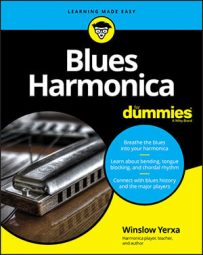Blues is played mostly on two types of harmonica, diatonic and chromatic. Either way, the really important things about a harmonica are that it be airtight, in tune, and not likely to make you bleed, turn green, or otherwise endanger your health. If it also plays easily, makes a big sound, looks cool, lasts a long time, and doesn't cost an arm and a leg, then it's a winner. Your best bets:
Diatonic harmonica: Most of the time you'll use this type of harmonica (often referred to simply as the diatonic). It has a few important characteristics, including
Being tuned to a single key: The word diatonic is musical lingo meaning "only in one key." Each diatonic harmonica includes the notes that belong to just one key, such as the key of C, G, or B flat. So you'll eventually own several diatonics to play in several keys.
Having a single reed for each note: The diatonic is a single reed harmonica, with only one reed to play each note. Double reed harmonicas, with two reeds per note, such as tremolos, are very common, but they're almost never used in blues.
Having 10 holes: You can get diatonics with 4, 6, 10, 12, or 14 holes, and you can use any of them to play blues. But most of the time, you'll use the 10-hole diatonic.
Chromatic harmonica: This type of harmonica is bigger and more expensive than the diatonic, and you may use it for one song out of ten. Yet, its distinctive sound is an important element in urban blues harmonica.

